Steam Project
The objective of my project is to cover the respiratory-cardiac systems, the module is on the lower respiratory tract and the artery and venous structures connecting to the heart, and how they interact with the respiratory system. In my report, my intentions were to compare the structures of the lungs, heart, veins, and arteries to traffic commonly found on streets, freeways, and airports. I had a key on the right-hand side of the model displaying what the item was and a sticky note saying what the item is representing. The materials I utilized to create my model are a combination of food products, sticky notes, and paper towels. The foods I used were pasta materials, a single egg, and two pieces of ham. The pasta products I bought for the model were a box of angel hair pasta, a box of spaghetti, a box of fettuccini noodles, a box of small noodle pieces, a box of small elbow noodles, and a bag of bigger elbow noodles. The angel-hair pasta is meant to represent veins because they are thinner than the spaghetti and fettuccini noodles. The spaghetti represents the bronchioles, the fettuccini represents two different structures, the arteries and the barrier for the lung wall and the outline of the trachea and bronchi. This is because the fettuccini noodles were the thickest ones I could find so I used them for both purposes. The short pieces of noodles represent the capillaries. The single egg represents the lymph node. The ends of the spaghetti noodles in the designated location of the lung represent the alveoli-capillary wall. The small elbow noodles represent de-oxygenated blood cells, and the large elbow noodle represents an oxygen-sufficient red blood cell. The two pieces of ham represent the body cell where oxygen and carbon dioxide are exchanged. The way I explained the model, as I intended to display the project, is that the respiratory and cardiac systems are parallel in analogy to streets, freeways, airports, and terminals. The blood cell in this analogy is the taxi cab or shuttle. The carbon dioxide or other junk picked up from the body’s cells and transported to the heart for disposal through the lungs is the outgoing passenger being transported to the airport. The oxygen being transported to the cell are the incoming passenger, they come into the airport and get a taxi to a different location. The heart is the airport, where a lot of traffic comes through. The lungs are the terminal where passengers fly out and fly in on a massive scale rapidly, and continuously. The incoming passenger flies into the airport and gets a taxi, in order to get to the separate location, the taxi gets onto a freeway to travel there quicker, the freeway is the arteries. There is a quicker pace of travel on a freeway than there is on a normal road, just like how arteries have a higher pressure in an artery than there is in a vein. In order to get off the freeway the taxi (oxygen-sufficient blood cell) takes the off-ramp (capillaries). Upon arriving at the location, the taxi drops off the passenger but sees that another potential customer is exiting the building the previous customer just entered (this is the act of oxygen entering the cell and carbon dioxide leaving the cell and being attached to the blood cell). The taxi driver takes a normal road to the airport at a slower pace because the current passenger is in no rush to get to their final destination. The taxi drives to the airport, through the traffic stops and roundabouts (valves and atriums) through the tunnels, (pulmonary artery and pulmonary valve to get to the drop-off point outside the terminal. The passenger departs and a new incoming passenger gets into the now-empty cab. The taxi driver starts the drive and gets onto the freeway to get to the next location. Rinse and Repeat. The model was made last minute and is crude in an artistic sense. The atriums and ventricles were smaller in the display, but the pilling of elbow noodles into the little circular structures on the right side represents cardiac preload and the blood flowing out of the atrium is the cardiac discharge. For any questions, ask me on Slack or by Email. ngilreath@alaska.edu
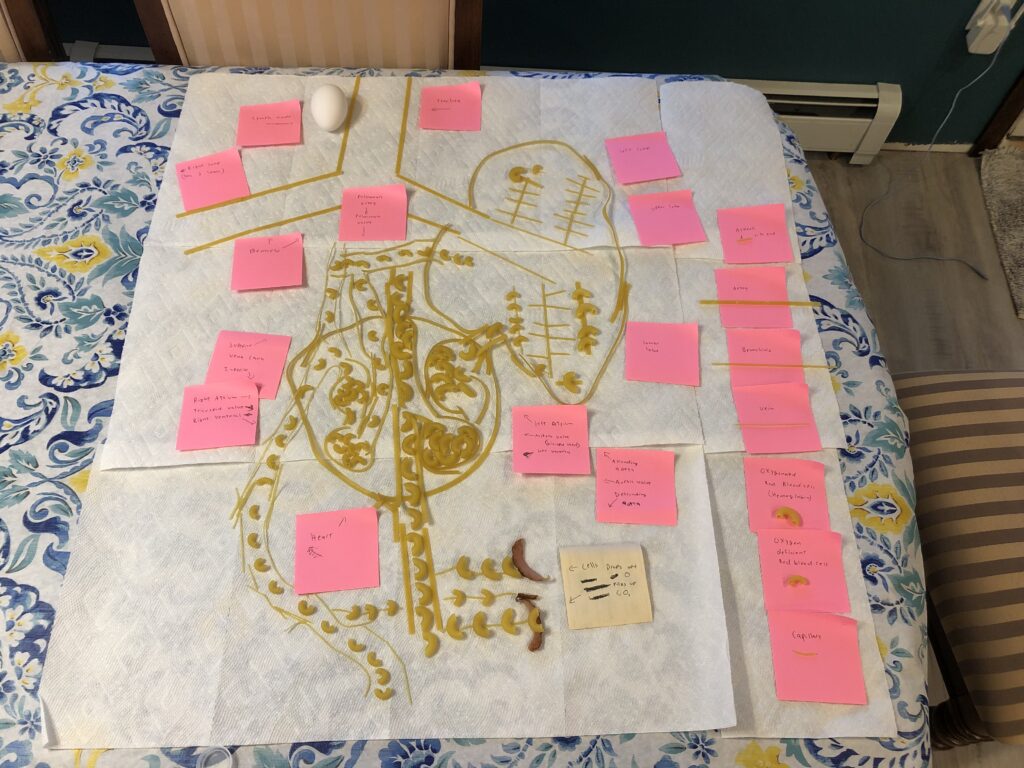
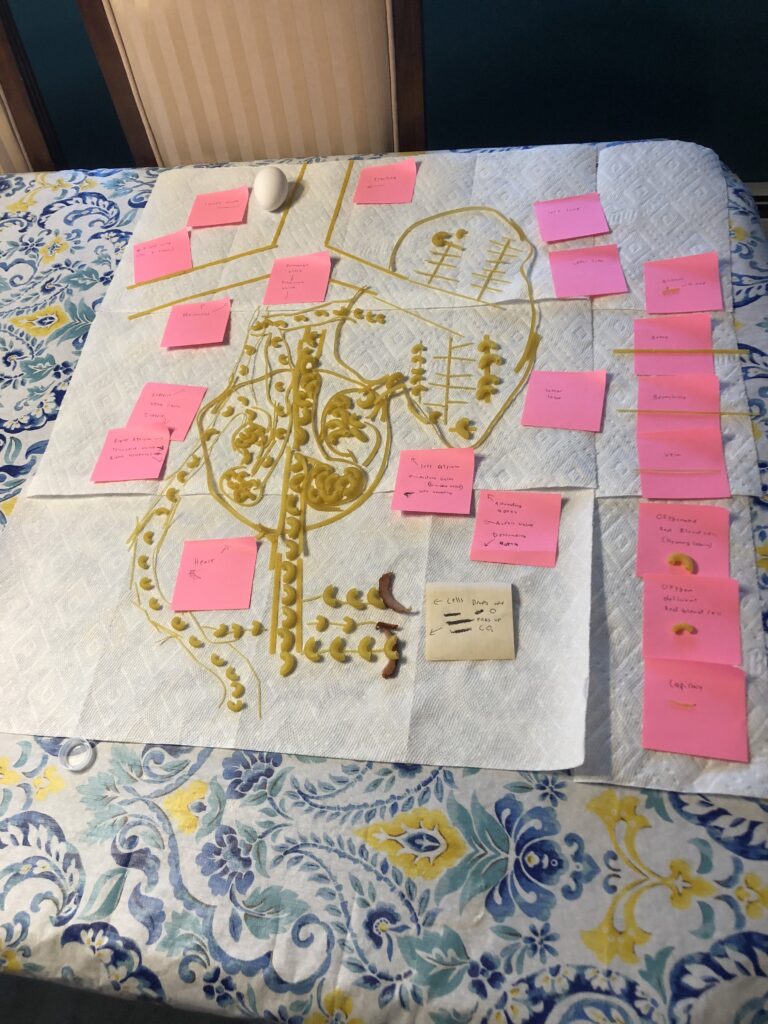
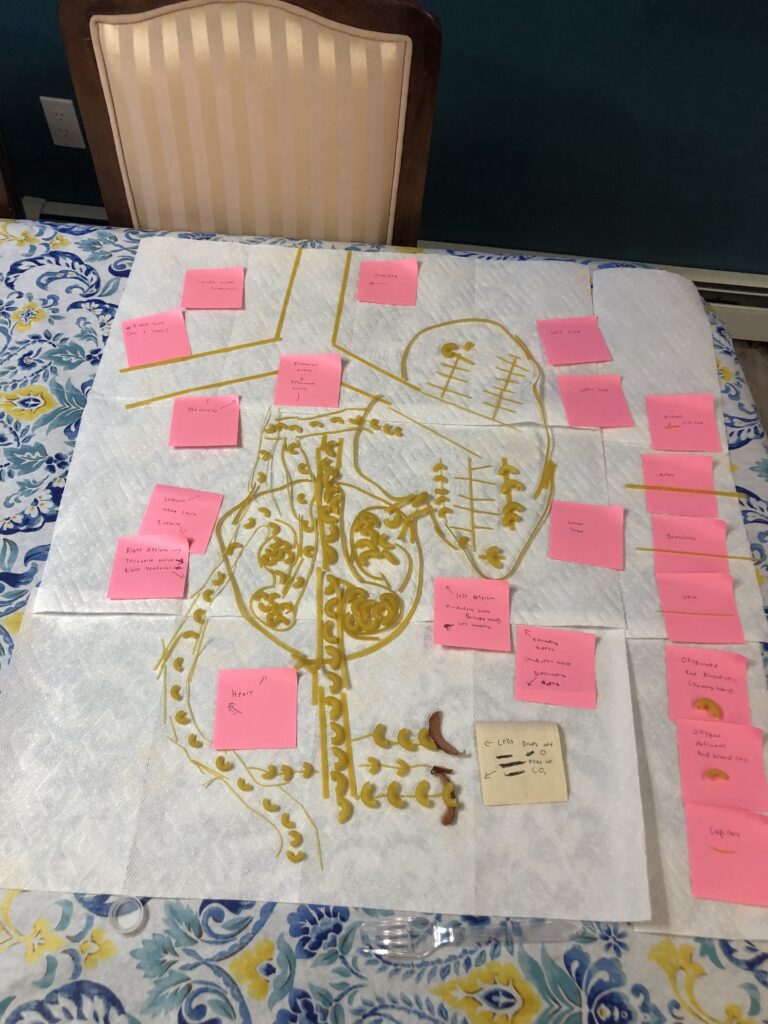
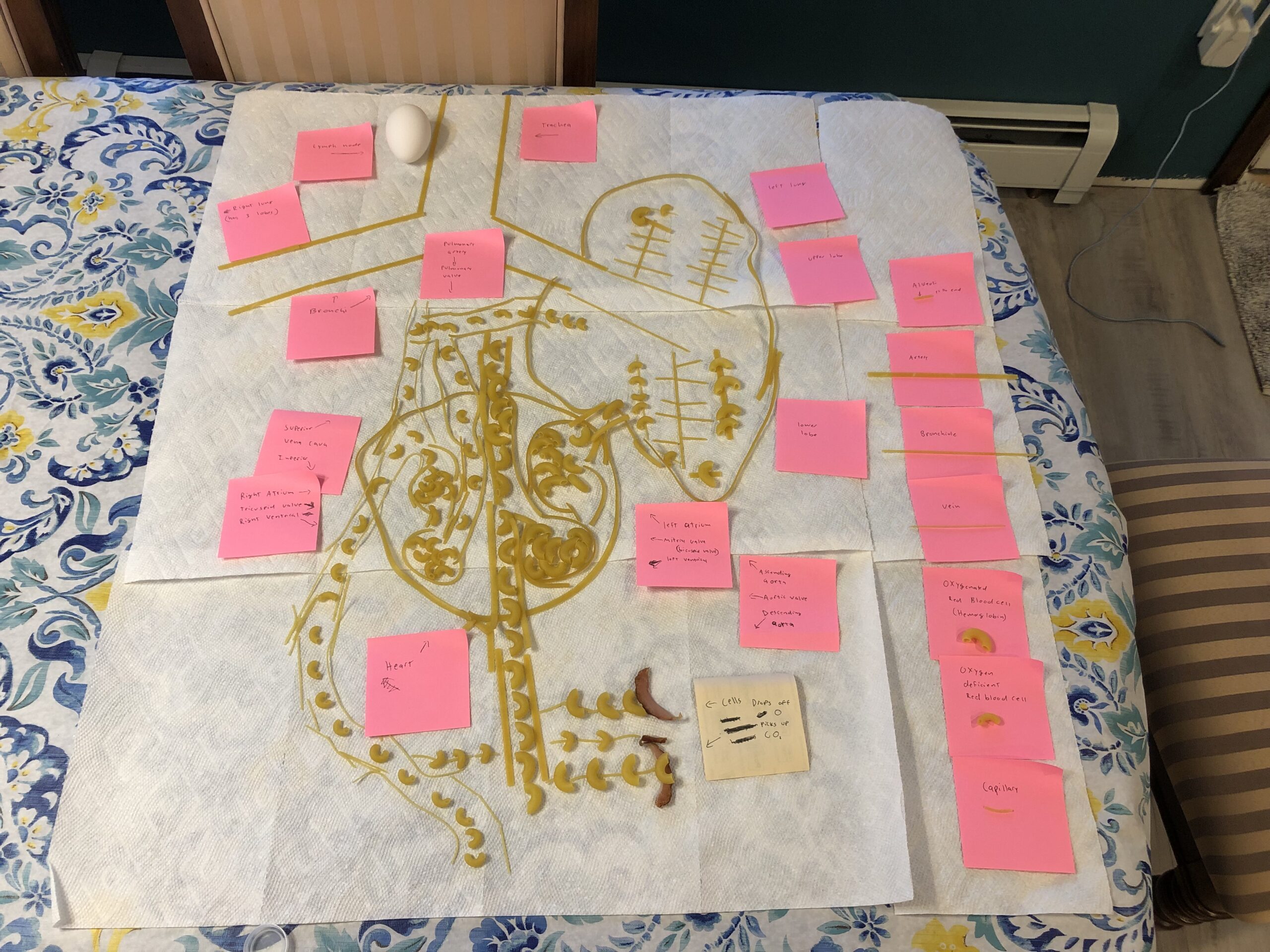
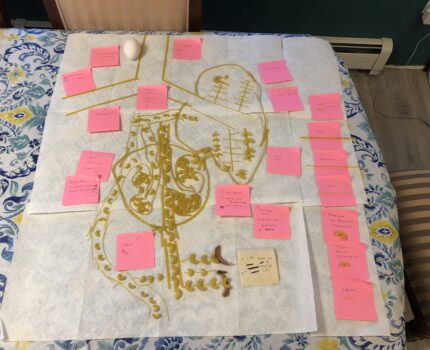
Nathan’s project aims to help people better understand the lower respiratory tract and its connection with the heart by creating a model using food products. The objective is to more thoroughly cover the respiratory-cardiac systems. This model is much easier to interpret than an anatomical diagram and uses real life comparisons to increase comprehension. The model compares the structures of the respiratory and cardiac systems to the traffic on streets, freeways, and airports. The pasta represents veins, bronchioles, and arteries, while the ham represents the body cells where oxygen and carbon dioxide are exchanged. The model also compares blood cells to taxi cabs or shuttles and the heart to an airport, with the lungs acting as a terminal. The model shows that there is a faster pace of travel on freeways, which is similar to the higher pressure in arteries than veins. To get off the freeway, the taxi (oxygen-sufficient blood cell) takes the off-ramp (capillaries) and then takes a slower road to the airport (body cells) to drop off the passenger (oxygen) and pick up another (carbon dioxide).